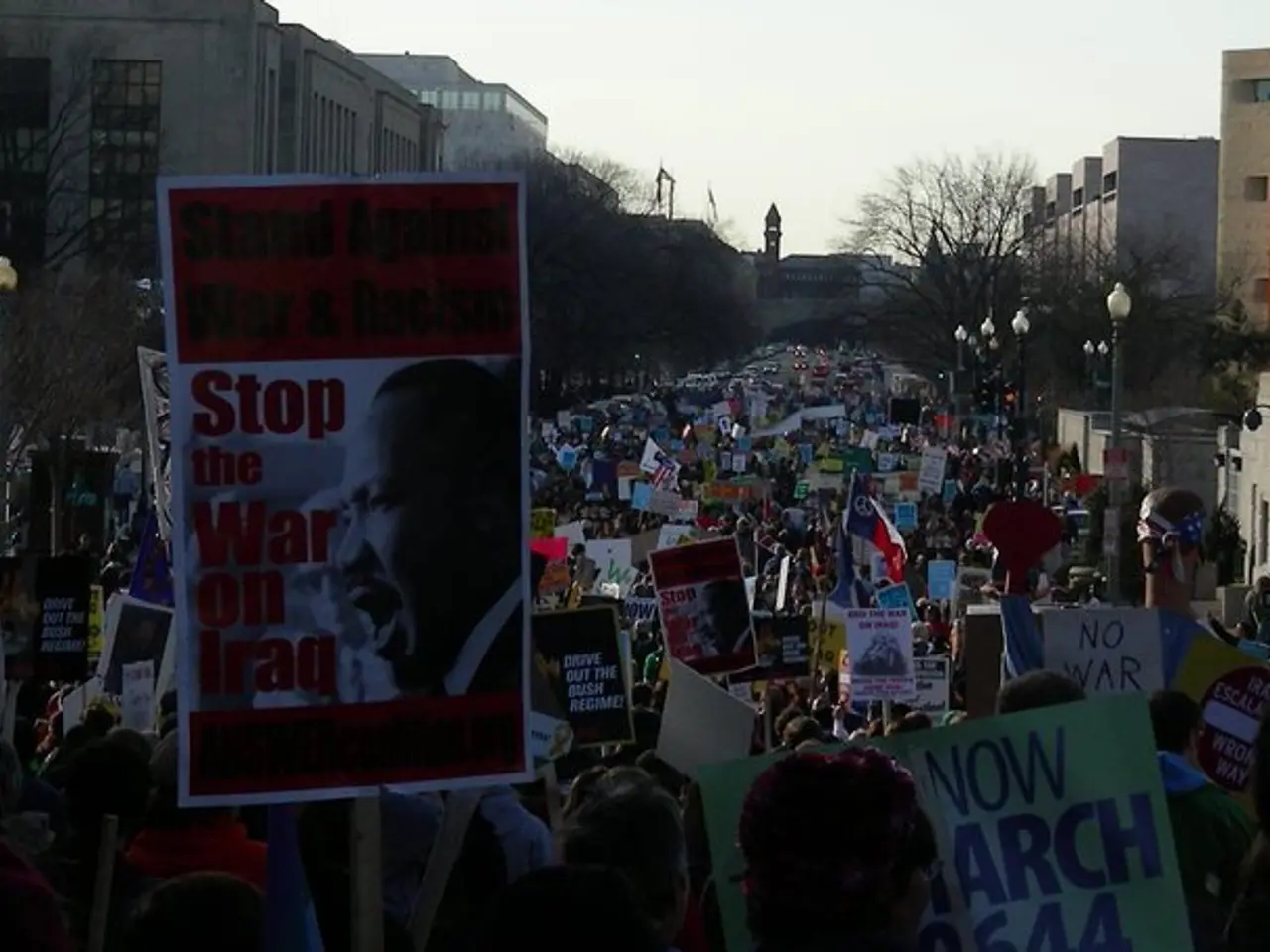Government demonstrations against Serbia's administration intensify once more
Protests against President Aleksandar Vucic in Serbia have continued for more than nine months, with the latest incidents occurring in Belgrade for a second night in a row. The unrest began following the collapse of a newly renovated train station canopy in Novi Sad on November 1, 2024, which resulted in 16 fatalities and was seen as a symbol of official neglect and corruption.
The protests, initially student-led, have evolved into a widespread movement demanding early elections and governmental accountability. They have spread to smaller towns such as Vrbas, Bačka Palanka, and Valjevo, with thousands participating.
The movement, though mostly peaceful, has seen increasingly violent clashes. Pro-government supporters and masked enforcers have confronted protesters, with attacks involving stones, frozen water bottles, fireworks, and arson, including setting fire to ruling party offices. The police response has been controversial, often using force against demonstrators while allegedly allowing pro-government violence toward protesters.
President Vucic has accused protesters, particularly students, of attempting a "color revolution" orchestrated by foreign entities, framing them as illegitimate. However, he has also made offers for dialogue amid the unrest.
The protests represent the strongest challenge to Vucic’s regime since his rise to power in 2012. They reflect deep dissatisfaction with democratic backsliding, corruption, and law enforcement behavior in Serbia, uniting diverse groups against the current system and putting Vucic’s grip on power under unprecedented strain.
The protesters are demanding an end to corruption in the Vucic government, the resignation of President Vucic, and new elections. In Novi Sad, people smashed the windows of two offices of the ruling SNS party, entered the buildings, and removed items.
The Interior Minister Ivica Dacic has made a statement, while President Vucic announced that the authorities would "clean up" the streets of protesters, whom he referred to as criminals.
The situation remains tense and dynamic, with nightly clashes, expansion to smaller towns, continued police repression, and persistent demands for early elections and government accountability. Independent experts and opposition figures blame shoddy workmanship and corruption under the Vucic government for the train station tragedy. The protests have occurred in more than 30 locations across the country, with the latest incidents in Belgrade leading to injuries for five police officers and the arrest of 14 demonstrators. The atmosphere remains chaotic, as reported by the media.
- The general-news coverage of Serbia reveals that the latest incidents in Belgrade are part of the ongoing politics, with protests against President Aleksandar Vucic happening for more than nine months and demanding an end to corruption, the resignation of President Vucic, and new elections.
- Amid the chaos and unrest, crime-and-justice issues also surface as the protests escalate, with protesters in Novi Sad smashing the windows of two offices of the ruling SNS party, instances of police violence, and arrested demonstrators.








